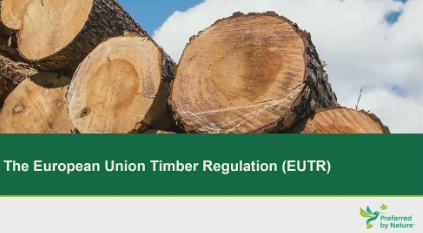Joint International Economics - UNU-CRIS Seminar by Glenn Rayp, Samuel Standaert and Liliana Lizarazo Rodriguez on the Impact of EUTR on the Volume and Structure of Trade in Timber and Timber ¨Products

The seminar will take place on Friday, 28/11, from 09h00 to 10h00 in Classroom 1.3, Hoveniersberg (1st floor) and will be livestreamed via MS Teams.
Abstract. The increasing integration of sustainability into international trade policy has brought due diligence-based regulations to the forefront as instruments regulating the conduct of companies to prevent undesirable environmental effects of international trade. Among these, the European Union Timber Regulation (EUTR), adopted in 2010 but implemented since 2013, stands out as a key measure aimed at preventing the placement of illegally harvested timber and timber products on the EU market. While most academic analyses have concentrated on the sustainability provisions embedded in trade agreements, the broader impact of due diligence mechanisms such as the EUTR on trade flows remains underexplored. This study addresses that gap by investigating how the EUTR affects both the volume and structure of bilateral timber trade, with particular attention to shifts in sourcing patterns and potential trade diversion effects.
EUTR requires operators placing timber on the EU market for the first time to implement a due diligence system to their operations, ensuring traceability, risk assessment, and mitigation. While FLEGT licenses and CITES export permits offer exemptions, enforcement is carried out at the national level by designated authorities. Other regulations to combat deforestation have emerged outside the EU, including the United States' Lacey Act Amendment and Australia’s Illegal Logging Prohibition Act.
To estimate the effects of the EUTR, the study employs a structural gravity model with rich sets of fixed effects and interaction terms. These allow for an examination of how the regulation influences trade volumes, origin country composition, and possible redirection of trade towards less strictly regulated markets. Different dimensions of exogenous variation are exploited, including product-level EUTR listings, country-level illegal logging risks, and regulatory overlaps with non-EU jurisdictions. The data underpinning the model includes detailed bilateral trade flows from COMEXT and Comtrade (2000–2023), trade policy information from the World Bank’s Deep Trade Agreements and the TREND database , and illegality risk assessments based on the Forest Trends' ILAT Risk Data Tool.
Initial results suggest that EUTR does more than simply depress trade volumes. They appear to encourage a reconfiguration of trade patterns, whereby countries with high perceived illegality risks or weaker governance are displaced in favor of more compliant sources. At the same time, there are signs of trade diversion, particularly towards countries like China that lack similar due diligence mandates. These findings underline that while such data may not directly measure the effectiveness in reducing illegal logging, they do show observable structural effects on global trade. As corporate sustainability requirements become more deeply embedded in trade governance, understanding these dynamics is critical for both policymakers and trade partners navigating an evolving regulatory landscape.
This is a closed event. For further information, please contact Pascale Vantorre at pvantorre@cris.unu.edu
Upcoming Events
Similar Events
No events found.



